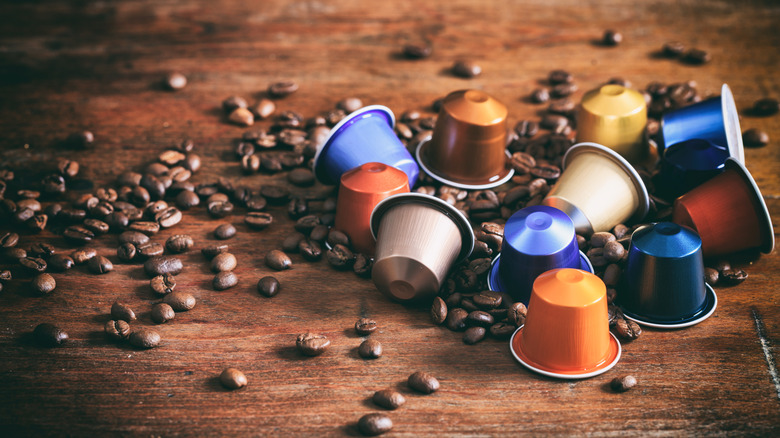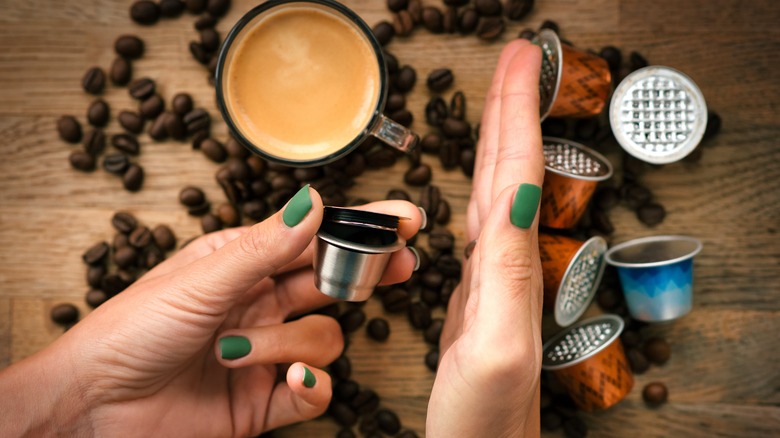The Major Downside To Single-Use Coffee Pods (& How To Change That)
Single-use coffee pods have exploded in popularity, largely because they offer coffee drinkers a quick and convenient cup of brew. Fior Markets, the worldwide coffee pod market is projected to reach nearly $30 billion by the year 2025. But this growth is not without a significant downside — single-use coffee pods are very bad for the environment.
The pods, also sometimes referred to as cups or capsules, are disposed of after a single use, making this coffee preparation method responsible for massive waste. In 2018, it was estimated that over 56 billion coffee capsules were thrown away and ended up in landfills, as reported by Halo. This knowledge has caused many coffee lovers to reject single-use coffee pods — in 2016, the city of Hamburg, Germany, prohibited disposable coffee capsules in buildings owned by the government. And yet, the industry still grows.
Still, there are some ways in which you can avoid contributing to this source of environmental pollution. Some coffee companies have begun exploring new ways to enjoy their coffee pods — while being easier on the planet.
More sustainable choices
Because being environmentally friendly is important to a lot of consumers, some producers of coffee pods are trying to make their products greener. There are pros and cons to each approach, and to truly understand your coffee consumption's environmental impact, you might need to do a little homework. For example, some single-use pods market themselves as recyclable because they are made from plastic materials that are commonly recycled. However, many recycling facilities don't accept pods because of their size. That means that even if you properly recycle your disposable coffee capsule, it could still end up in the landfill. Check the recycling guidelines of your local facility before you depend on this alternative.
Some capsules are listed as biodegradable or compostable. Compostable capsules are great if you have a way to compost them, either at home or at a separate facility. Biodegradable capsules can also be good, but you have to be careful — some may not completely biodegrade and might instead just break down into microplastics. Microplastics are tiny pieces of plastic (5 millimeters or less) that are a major cause of pollution. They end up in our soil, our waterways, and sometimes even in our bodies.
Many companies are now selling reusable coffee pods, often made of stainless steel. Instead of tossing the capsule out after you use it, rinse it with water so it is ready to use again. This method reduces your environmental footprint greatly because it produces less waste with each brew!

